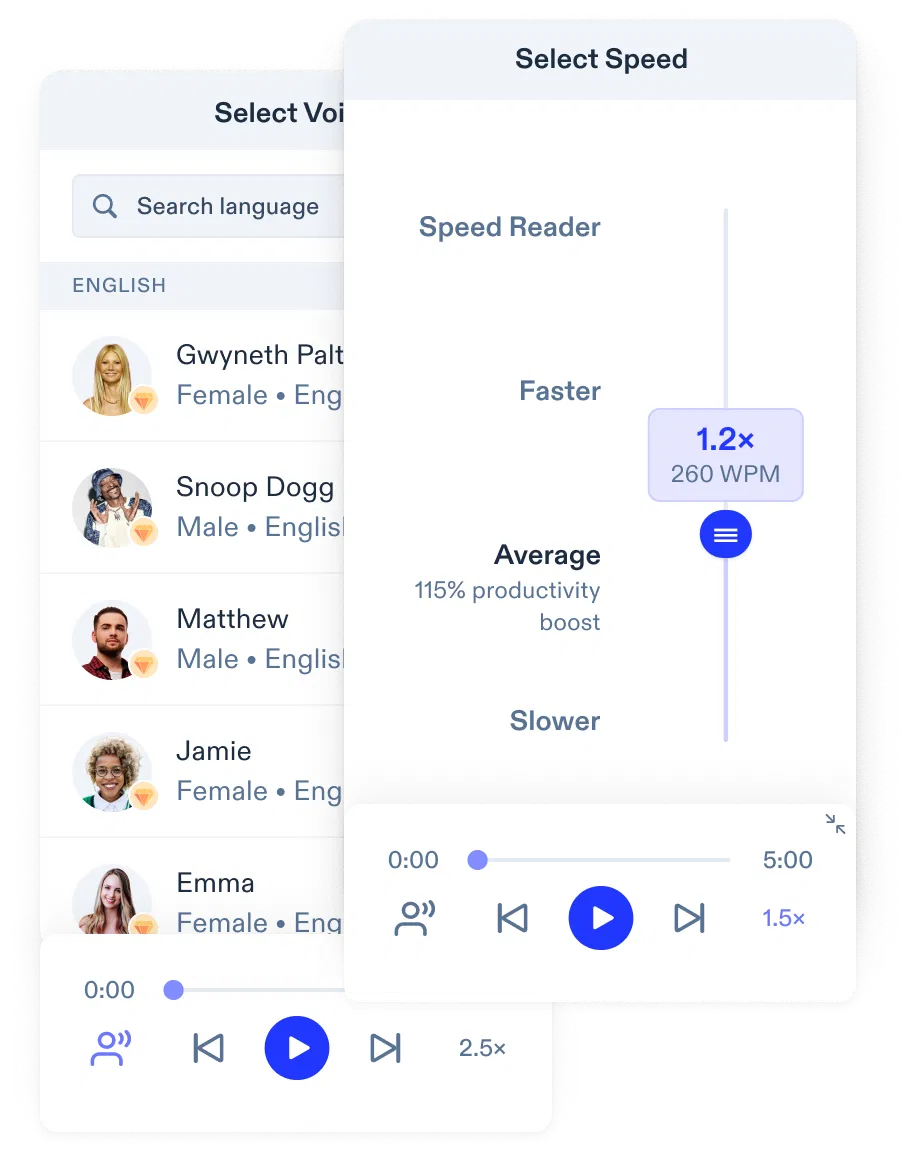Do you want an easy way to translate videos online? Here's how to translate videos into different languages with subtitles and dubbing.
In the era of digital content, videos are one of the most engaging ways to share information, ideas, and stories. They are a crucial part of social media strategies, YouTube channels, and online tutorials. To reach a global audience, however, it's important to translate videos into different languages. Let’s break down the benefits of video translation, the different types, and how you can translate your videos online using subtitles and dubbing.
Benefits of video translation
Translating video content allows you to reach a broader global audience by making your content accessible to viewers who speak different languages, not just English. Online video translators can make your content accessible to speakers of any foreign languages, including Japanese, Spanish, Arabic, Hindi, Portuguese, Korean, and hundreds more. This can significantly increase the number of views your videos receive and boost your online presence. Furthermore, translated subtitles or dubbing can improve the user experience by allowing viewers to consume content in their preferred language, which can lead to higher engagement and retention rates for your video content.
Different types of video translation
There are two main ways to translate videos: subtitles and dubbing.
Subtitles
Subtitles are lines of text displayed at the bottom of the screen, translating the spoken language into the viewer's preferred language. They require careful transcription and translation of the original language, followed by synchronization with the video's timing.
Avoid Google Translate
While Google Translate can be a convenient tool for quick and simple text translations, it may not be the most effective choice for translating videos. The quality and accuracy of Google Translate can vary, especially with complex sentences, idiomatic expressions, and specialized or technical vocabulary.
In video translations, where context and emotional nuances can play a significant role, inaccurate or awkward translations can lead to confusion, misinterpretation, or even unintentional humor, which can affect the overall quality of the video content and viewer experience. Moreover, Google Translate does not offer synchronization with the video timeline or voiceover capabilities, which are crucial aspects of video translation.
Therefore, for professional and high-quality video translations, it's advisable to use specialized video translation services or hire professionals proficient in the target language.
Dubbing
Dubbing involves replacing the original audio track with a translated voiceover. This requires a voice actor to re-record the original dialog in the target language while matching the timing and expression of the original speaker. There are also AI dubbing tools like Speechify Dubbing Studio that provide automatic translation with AI voices.
How to translate videos online
There are several online tools and services that can help you translate your videos. Let's explore some steps you can take to translate your videos using subtitles and dubbing.
How to translate videos with subtitles
1. Transcribe the original audio
First, you need to create a text transcript of the original audio. Some video editing tools, like VEED, offer automatic transcription services that can auto-generate subtitles for your videos online in real time.
2. Translate the transcript
Next, translate the transcript into the desired language. You can use an online translation service or hire a professional translation service for more accurate results.
3. Create an SRT or VTT file
Subtitles are typically stored in .srt or .vtt format. You can use a video editor or an online tool to convert your translated text into one of these formats. Ensure that your subtitles sync correctly with your video's audio.
4. Add subtitles to your video
Finally, upload the subtitle file to your video. Most video editors and social media platforms allow you to add subtitles to your videos. For instance, YouTube has a feature where you can upload an SRT file directly to your videos.
How to translate videos with dubbing
1. Translate the transcript
Similar to subtitling, the first step in dubbing is to translate the original video's transcript.
2. Hire a voice actor or use a text to speech tool
Next, you need to record the translated script. You can hire a voice actor proficient in the target language or use a text to speech tool that can convert your translated text into speech.
3. Replace the original audio
In your video editor, remove the original audio and replace it with the new, translated voiceover. Ensure the new audio syncs correctly with the video content.
Skip translating your script and go straight to translation dubbing with Speechify Dubbing Studio
If you’re looking for the best online video translator, Speechify Dubbing Studio is the answer. With just a single click, you can auto-translate videos into natural-sounding voices in different languages with this AI dubbing tool. From YouTube videos to other video files and audio files, you’ll be amazed by how much time and money you can save translating videos online.
Start translating videos now with Speechify Dubbing Studio.

Cliff Weitzman
Cliff Weitzman is a dyslexia advocate and the CEO and founder of Speechify, the #1 text-to-speech app in the world, totaling over 100,000 5-star reviews and ranking first place in the App Store for the News & Magazines category. In 2017, Weitzman was named to the Forbes 30 under 30 list for his work making the internet more accessible to people with learning disabilities. Cliff Weitzman has been featured in EdSurge, Inc., PC Mag, Entrepreneur, Mashable, among other leading outlets.












 Previous
Previous